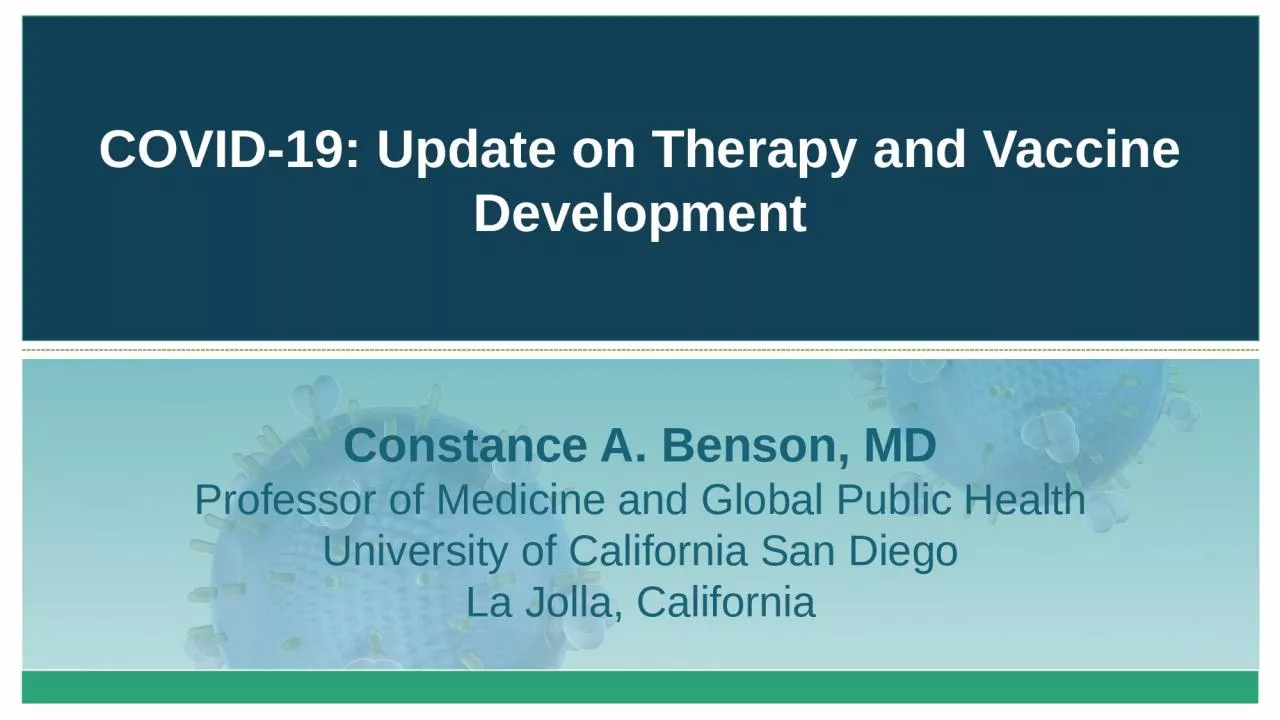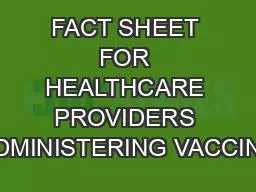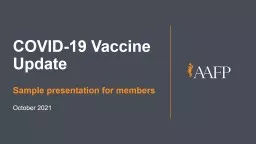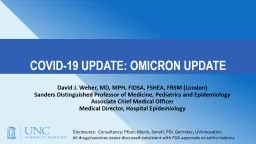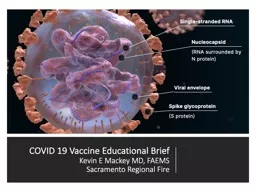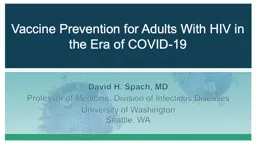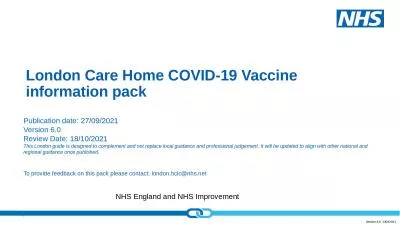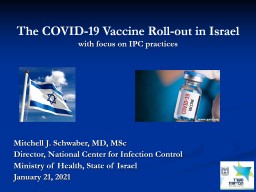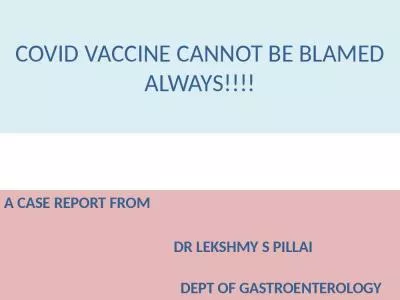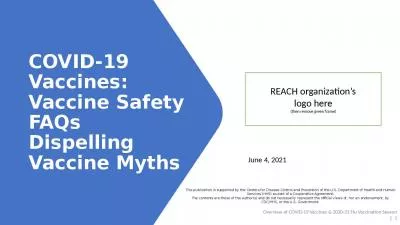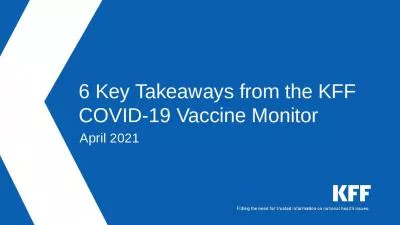PPT-COVID-19: Update on Therapy and Vaccine Development
Author : susan2 | Published Date : 2024-03-13
Constance A Benson MD Professor of Medicine and Global Public Health University of California San Diego La Jolla California Financial Relationships With Commercial
Presentation Embed Code
Download Presentation
Download Presentation The PPT/PDF document "COVID-19: Update on Therapy and Vaccine ..." is the property of its rightful owner. Permission is granted to download and print the materials on this website for personal, non-commercial use only, and to display it on your personal computer provided you do not modify the materials and that you retain all copyright notices contained in the materials. By downloading content from our website, you accept the terms of this agreement.
COVID-19: Update on Therapy and Vaccine Development: Transcript
Download Rules Of Document
"COVID-19: Update on Therapy and Vaccine Development"The content belongs to its owner. You may download and print it for personal use, without modification, and keep all copyright notices. By downloading, you agree to these terms.
Related Documents

